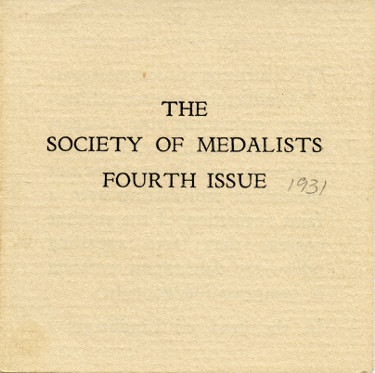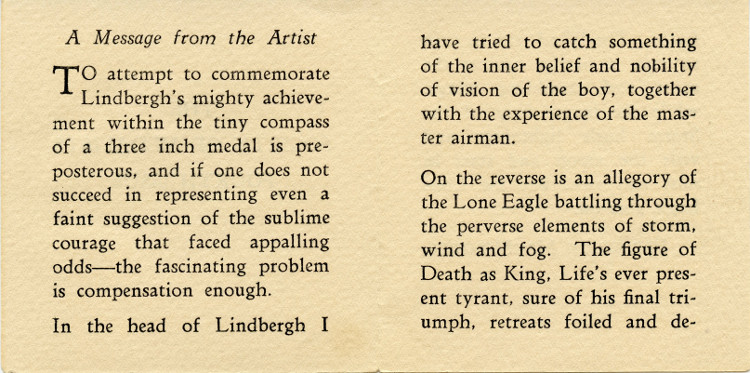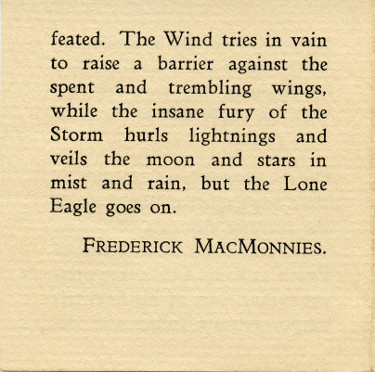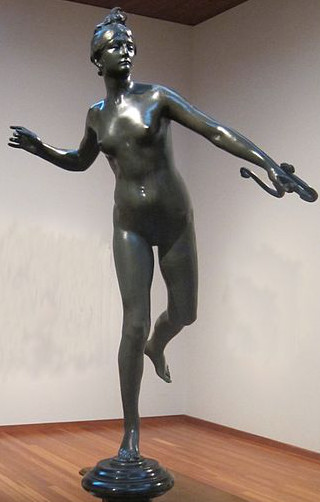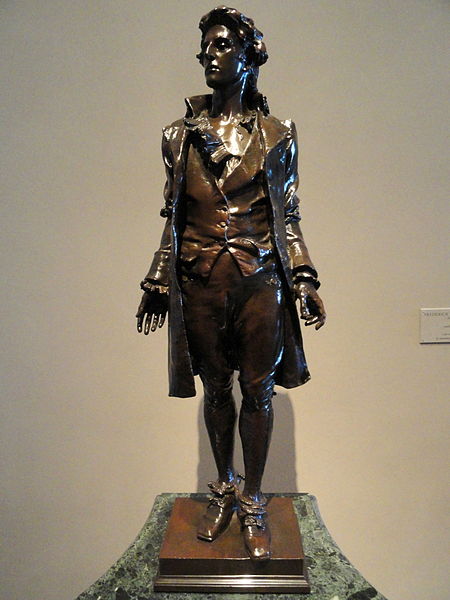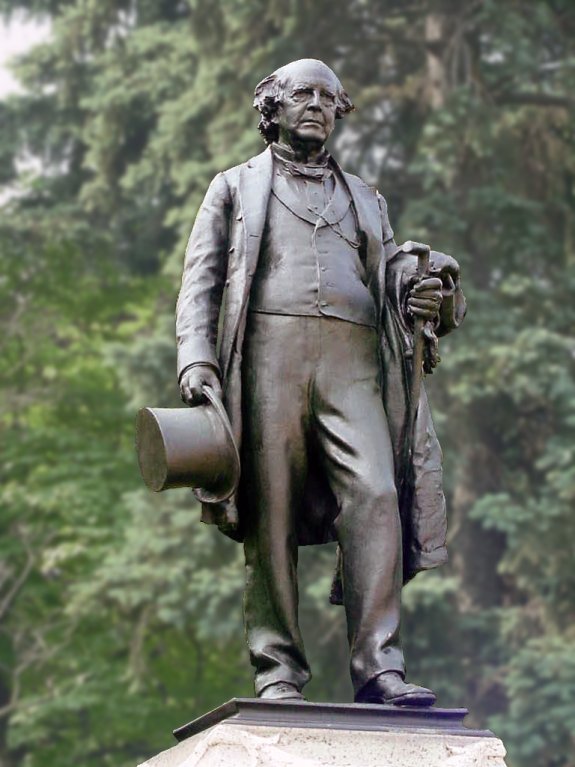Frederick William MacMonnies, sculptor and painter, was born in Brooklyn, N. Y., September 20, 1863, the son of William and Juliana Eudora (West) MacMonnies. His ancestors were natives of Dumfries, Scotland. The name is an old Galloway name, also spelled MacMunzies (pronounced (MacMunyies), and the family is credited as a sept of Clan Menzies. His mother was a niece of the painter, Benjamin West.
Mr. MacMonnies was admitted to the studio of Augustus Saint Gandens in 1880, where he worked for four years; studying at night in the life classes of the National Academy of Design and the Art Students League, New York. He completed his art education abroad at Munich and in the atelier of Falguière, in the École des Beaux-Arts, also in his private studio with Antonin Mercie. He received the first prize at the National Academy of Design, 1884, and the Prix d'Atelier, the highest prize opened to foreigners, 1886, and in 1887 established his own studio in Paris. From then on he resided in Paris with the exception of occasional visits to the United States. He received Honorable Mention for his first figure of Diana, Paris Salon, 1889; Second Medal, Salon 1891, for statues of Nathan Hale, and James Samuel Thomas Stranahan ; First Class Gold Medal, Antwerp, 1894; Grand Prize of Honor, Paris Exposition, 1900; also First Medals at expositions at Atlanta, Buffalo, Philadelphia and Boston: for painting, Honourable Mention, Paris Salon, 1902; Third Medal, 1904. He was decorated Chevalier of the Legion of Honour by the French Government, 1896; Chevalier of the Order of St. Michael of Bavaria, Munich, 1897; and was a member of the National Academy, 1906, American Academy, 1915, National Institute of Arts and Letters, National Sculpture Society, Architectural League, and many clubs and organizations.
After the death of Saint Gaudens, Mr. MacMonnies ranked as America's first living sculptor. His reputation abroad was equal to or even greater than that acknowledged him at home. His conceptions were always delicate and refined. MacMonnies' principal works are: three life size bronze angels at St. Paul's Church, New York, 1899; Nathan Hale, City Hall Park, New York, 1891; James Samuel Thomas Stranahan, Prospect Park, Brooklyn, 1891; Pau of Rohallion, 1890; Faun with Heron, 1892; Sir Henry Vane, Boston Public Library, 1893; Colossal Fountain, World's Columbian Exposition, Chicago, 1893; Bacchante with Infant Faun, Metropolitan Museum of Art, New York, and Luxembourg Gallery, Paris, 1894; two pediments Bow-cry Bank, New York, 1894; four spandrils Washington Arch, New York, 1894; Venus and Adonis, 1895;. Cupid, 1895; figure of Victory for bronze doors and statue of Shakespeare, Congressional Library, Washington, D. C., 1898; Army and Navy groups and bronze quadriga for Soldiers and Sailors Arch, Prospect Park, Brooklyn, 1900; two groups of horses, Prospect Park, Brooklyn, 1900; equestrian statue of General Slocum, Brooklyn, 1900; equestrian statuette of Theodore Roosevelt, 1905; equestrian statue of General G. B. McClellan, Washington, 1906; two fountains, Knickerbocker Hotel, New York, 1906; Pioneer Monument, Denver; marble portrait group for George J. Gould, Esq., 1906; bronze group, Fax Victrix, 1906; statues of Inspiration and Philosophy, New York Public Library, 1915. In later years he devoted himself chiefly to painting, in which he achieved marked success.
Mr. MacMonnies married in Paris, September 30, 1888, Mary Fairchild. He married in Lucerne, Switzerland, March 23, 1910, Miss Alice Jones, daughter of John P. Jones. He had two daughters.
Frederick William MacMonnies died of pneumonia in 1937, aged 73.
Sourced from Electric Scotland, Scots and Scots Descendant in America
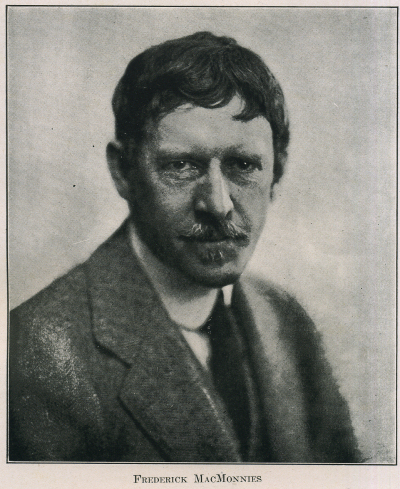
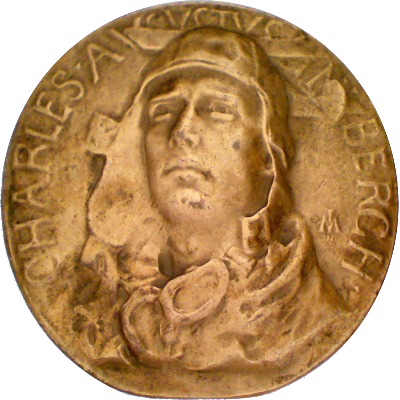
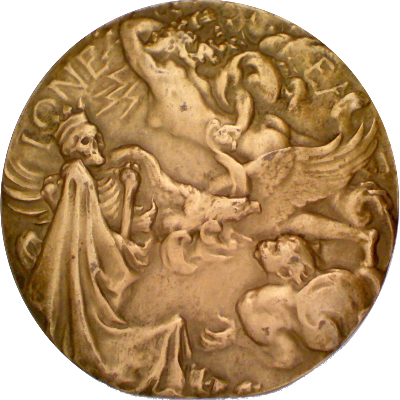

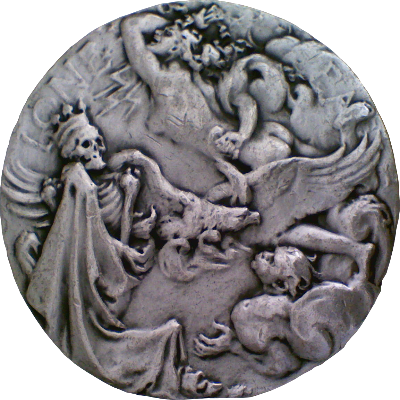
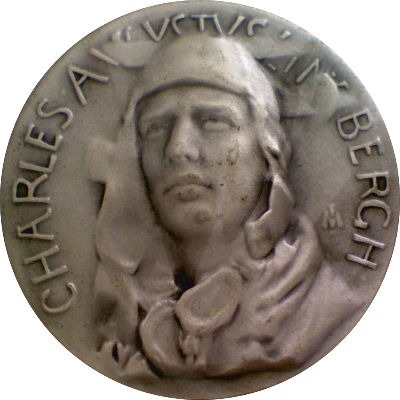
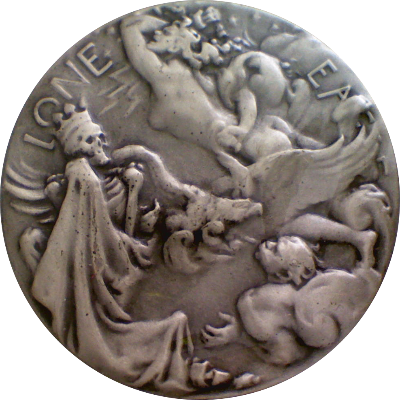
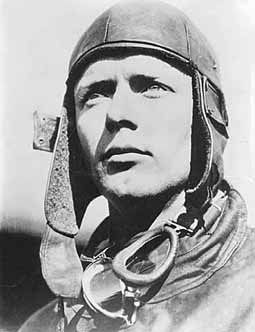 In MacMonnies' own words:
In MacMonnies' own words:
